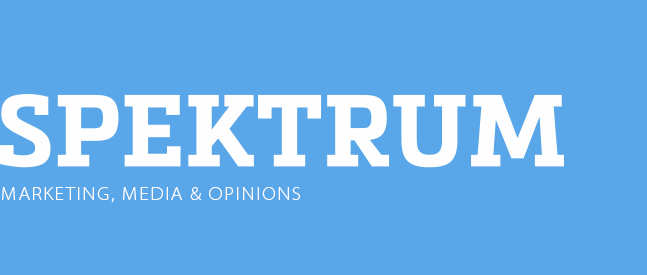
The Internet age has revolutionized the way we think about the world around us. One click can book our flights, purchase our groceries, or turn in our homework with simplicity unparalleled by any other medium.
We have grown accustomed to the convenience of using our smartphones to stay connected with our friends and using our tablets to peruse world news. Spending a dollar on a hardcopy of the local paper or twelve to purchase a new CD has become outdated as online media platforms and music services enable us to read about local events and listen to our favorite songs from the convenience of our homes—for free.

The dollars we once exchanged to buy a copy of the newspaper or listen to our favorite albums have been traded for a form of currency unique to the Internet itself: online advertisements. We have replaced the process of going out and purchasing our goods with sitting through an eight-second graphic about car insurance or magazine subscriptions, delaying the gratification of our wants by mere seconds versus minutes or hours.
Yet, we still aren’t satisfied. Online advertisements are the bane of the Internet-lover’s existence, always forcing us to sit through anywhere from five to 20 seemingly never-ending seconds of products and programs we likely aren’t interested in, and therefore will not purchase. To combat this problem, Internet gurus have come up with the idea of creating software that removes or alters advertisements on a webpage, enabling users to view their desired content without delay.
The most popular of these programs, appropriately called Adblock Plus, claims to be used by roughly 60 million individuals worldwide, and firmly believes that “people should have the freedom to block what they don’t like.” In some aspects it makes sense. Users who block ads often experience quicker loading times, lower CPU and memory waste, and increased privacy and security. It’s become so mainstream that nearly every web browser employs its own version of an ad blocker, allowing users to “blacklist” sites that produce content they never want to see and “whitelist” those that are deemed acceptable.
Often, users of ad blockers support the service because of the security aspect, as online advertisements have an overwhelming reputation for being detrimental to the health of CPUs—a fact that can’t be disputed. In 2013, Cisco’s Annual Security Report found that online advertisements were 182 times more likely to deliver a virus than searching internet pornography sites, a business notorious for its ability to corrupt both the software and hardware of nearly any device. The same study cited the increase of Android malware encounters by 2.577 percent over the previous year, indicating that malware producers are not only getting better at targeting devices but broadening their device base, as well.
In order to avoid all advertisements being put into one category Adblock Plus created the Acceptable Ads Program, designed to help content producers recapture lost impressions (read: clicks) by adding approved ads onto its whitelist. In order for an ad to qualify for the program it must adhere strictly to several guidelines set out by the company that test for “non-intrusiveness,” as well as pass a review by an open-source community. Understandably, it is the most controversial business model of its kind, as companies that do manage to pass the two-part test can be charged generously to be placed on the whitelist, a function users can disable in the software’s preferences.
Advertisements seeking approval within the program must be static, sans animations or sounds, and preferably text-only, as “attention-grabbing” images violate the software’s guidelines. Ads must also be appropriately placed on the page as not to obscure content along with several other qualifications that, according to the advertising world, are what renders advertisements successful in the first place.
Software programs like Adblocker have outraged advertisers, as advertisements are paid for on a “per click” or “cost per mille” (per 1000 clicks) basis, and companies are often still charged when users employ software that blocks graphics after they’ve been requested despite the fact that the content was never viewed. Compensation for content to on a whitelist in addition to this cost is crippling for small and start-up businesses and very costly for others.
In the United States, the Interactive Advertising Bureau (IAB) has taken a stand against ad blockers, with EVP Mike Zaneis citing the concept as “a huge economic problem for the industry.” The IAB, which represents over 600 companies that are responsible for 86 percent of the online advertisements shown in the country, says that, if not corrected, this problem could have detrimental effects on Internet users. It’s relatively simple for a webpage to detect ad blocking software, and the most likely course of action if the trend isn’t stopped will be sites prohibiting users who use this software from viewing their content. Some websites have also begun to employ “money walls” in order to make up for the lost revenue, in which users must pay before being allowed access to the website. However, the overwhelmingly free nature of the Internet sphere has made this difficult, as many users opt to not use a site’s services over purchasing them.
As society has grown accustomed to viewing and downloading media free-of-charge, advertisers are faced with extortion from companies like Adblocker in order to reach an online audience. In between our complaints over 6-second advertisements and pop-up ads, we fail to realize that advertisements are what enable our online content to be free, and doing away with them will force companies to charge for services we use every day and aren’t always willing to pay for. We even prove this in our choice of ad blockers, as internet users overwhelmingly turn down options for ad free web surfing despite monthly subscriptions being extremely low.
In an era in which content marketing is shifting to online platforms, advertisers cannot afford for their marketing strategies to be futile, and, as in any business transaction, some form of currency must be involved. As the internet continues to reign over all other forms of content sharing, users must decide between sacrificing time to view advertisements and sacrificing money to fund content, and which price they’re willing to pay.